Cadborosaurus willsi Revisited
Posted by: Loren Coleman on July 27th, 2008
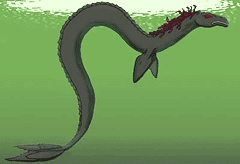
Due to the new sighting of Ogopogo, it was only a matter of time before someone would begin wondering what happened to Caddy, Cadborosaurus willsi, the Sea Serpent of Cadboro Bay, off British Columbia.
Victoria’s Times Colonist ran an update today.
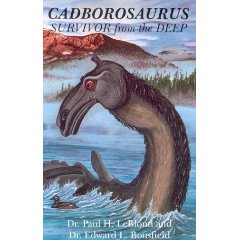
According to Paul Leblond, a retired University of British Columbia oceanography professor and author a 1995 book on the Cadborosaurus, Caddy was last spotted several years ago off the shores of Galiano Island.
“The search is still ongoing,” Leblond (pictured below) told a reporter.

Leblond said Jason Walton, vice-president of the B.C. Scientific Cryptozoology Club, keeps a video camera at Telegraph Cove monitoring the waters for a hint of the sea serpent.
Leblond said his threshold of proof for Caddy sightings are higher than those who documented the Ogopogo sighting, where only waves were reported. He needs specific details, like a hump, an eye or a head, he said.
“Hell, waves are all over the place,” he said.
The first sighting of Caddy dates back to 1932, just off Chatham Island. Since then, there have been hundreds of reported sightings among the waves of Cadboro Bay, which sparked the name Cadborosaurus.
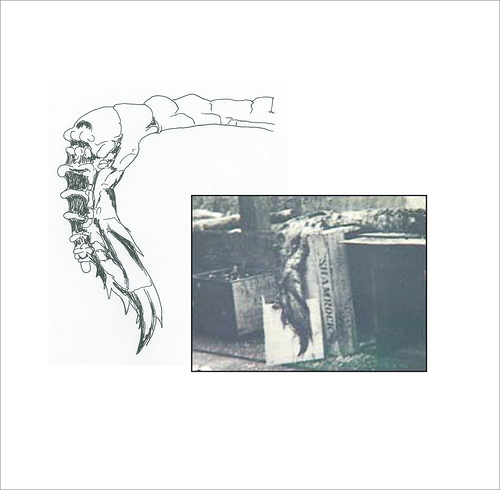
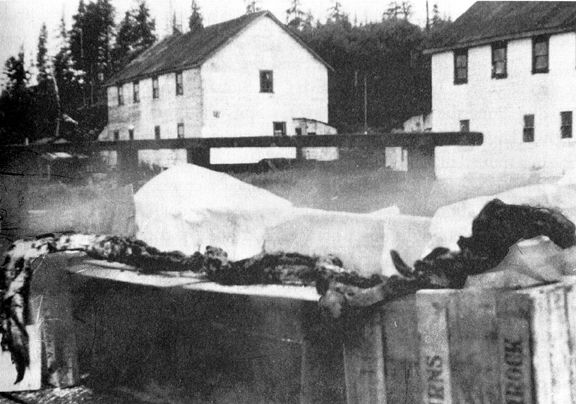
People who say they have seen it describe a serpent-like creature with a long neck and horse-like head.
Tammy Voak, who grew up in Oak Bay, says she used to hear stories about a creature lurking in the waters as a kid, but has since dismissed it as Island folklore.
“You’d think you’d see more of it if it was out there,” she said, as she watched her kids play on the only likeness of the Caddy which can be seen now, the 100-foot-long play structure in Gyro Park modelled after the green serpent. “Yeah, you need proof,” piped in her 11-year-old son Dustin.
But Victoria’s version of the Loch Ness monster did carry enough credence to spark a short-lived tourist attraction, Caddy Tours, which operated from 2003 to 2005. The tour’s former operations manager, Eric Hildebrandt, said there was not a sea monster to be found during any of his tours, which also included viewing of other marine wildlife around Discovery Island.
He doubts the serpent exists, but said his riders enjoyed getting lost in a tale of mystery at sea. “There’s not a lot of mystery left in life,” said Hildebrandt. “So for people to believe in something mythical like that, it makes them feel kind of good.”
While Leblond likes the idea of the homegrown, entrancing tale as much the next Islander, he wants scientific proof to either validate or repudiate the murmurings about the monster.
“We hope that eventually it’s going to be cleared up. Either someone is going to catch one or it will be stranded somewhere or someone will get a photograph,” he said. “Until then, it remains a mystery.”
Source: Whatever happened to old Caddy? ‘Search ongoing’ but Cadboro Bay sea monster last spotted years ago by Katie DeRosa, Times Colonist, Victoria, British Columbia, Sunday, July 27, 2008.
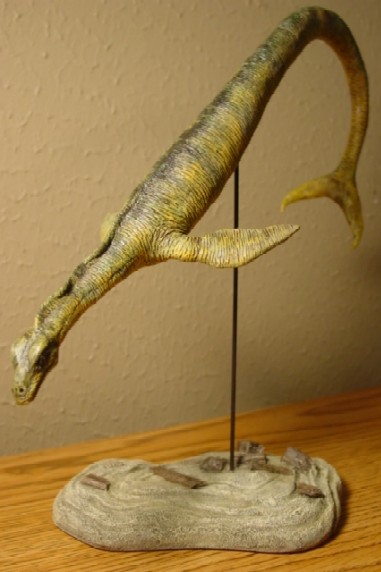
Jeff H. Johnson’s sculptured model of Cadborosaurus.
About Loren Coleman
Loren Coleman is one of the world’s leading cryptozoologists, some say “the” leading living cryptozoologist. Certainly, he is acknowledged as the current living American researcher and writer who has most popularized cryptozoology in the late 20th and early 21st centuries.
Starting his fieldwork and investigations in 1960, after traveling and trekking extensively in pursuit of cryptozoological mysteries, Coleman began writing to share his experiences in 1969. An honorary member of Ivan T. Sanderson’s Society for the Investigation of the Unexplained in the 1970s, Coleman has been bestowed with similar honorary memberships of the North Idaho College Cryptozoology Club in 1983, and in subsequent years, that of the British Columbia Scientific Cryptozoology Club, CryptoSafari International, and other international organizations. He was also a Life Member and Benefactor of the International Society of Cryptozoology (now-defunct).
Loren Coleman’s daily blog, as a member of the Cryptomundo Team, served as an ongoing avenue of communication for the ever-growing body of cryptozoo news from 2005 through 2013. He returned as an infrequent contributor beginning Halloween week of 2015.
Coleman is the founder in 2003, and current director of the International Cryptozoology Museum in Portland, Maine.










I think out of all the lake/sea monsters out there, Caddy has the best chance of being the “real deal”.
Unlike Loch Ness sightings, All eyewitness accounts of Caddy are consistent. The picture above fits the eyewitness descriptions. All sightings have been within a certain geographical location. It is all consistant in pointing to a real yet to be officially discovered creature.
What bothers me is that it has been a few years since a sighting. I hope that Caddy has not become extinct! 🙁
That’s my 2 cents!
I agree with Ryan. The best chance’s with Caddy.
There is certainly still a mystery here to solve, and I think the chances of a real undiscovered species in this region are good. Perhaps it’s the same elongated animal (allowing for some variance) reported as the New England Sea serpent, and it has a global (though sparse) distribution.
I can never resist mentioning Richard Ellis’ line about Caddy, one I have swiped in the past to describe my reaction to sasquatch: “If I were a betting man, I would bet against it. (I would, however, be delighted to lose the bet.)”
Ah yes, Caddy…
As a kid growing up in Victoria I was no stranger to Gyro Park and it’s possible that my interest in Cryptozoology can be traced to the cement structure of Caddy there.
I always thought that the dark green waters off Ten Mile Point, Gordova Bay Beach and the Malahat Inlet hid something more fascinating than just the resident pods of Orcas.
I have a question about the B/W picture. Is the decomposed animal too long to be explained as a digested moose. What looks like the head looks very much like that of a giraffe or a moose.
I have never seen those photos before. Are those supposed to be the creature in a trash heap?